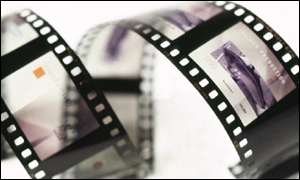Another modality is technology. Visual technology is defined as "any form of apparatus designed
either to be looked at or to enhance natural vision (Rose 13)." What distinguish visual images
apart are the technologies surrounding them. The technologies in making an image determine its
form, meaning, and effect. The difference in paintings and photographs are the ways they are
created, what they choose to show, and how they choose to show them. When looking at a photograph
it is important to know how the image is created, if the image is a reproduction of an original,
and how the image is seen. This helps to give meaning to an image.

Creation:
The type of technology used to create the image constitutes to the understanding of the image.
If the image was created with an older camera, subjects had to stay still longer. However, the
development of lightweight film cameras allowed images to be instantaneously captured, allowing
street photography to be possible. This allows the photographer to capture what is there. While
questions do arise of the candidness of the image, there can be no argument that the image was
really there when the shutter snapped.
The type of technology used to create the image loans to define the use of the image. Foucault
emphasizes that the institutional apparatus and technologies shift attention away from the
details of the individual image towards the production and use of the image. The institutional
uses of photography make us think photographs are truthfulness pictures, not photographic
techniques themselves. The emphasis on institutions and power/knowledge is crucial for
understanding the belief that photography pictures the real.
This is addressing the issues of surveillance, the idea that one can be seen without seeing,
the idea that street photography usually centers around. Street photography is supposed to
capture a moment in time. We assume this moment to be real and true, just as the surveillance
video in a museum is showing the truth.

Galleries and Museums:
There is no question how an image is interpreted when it is a replica versus a print. The
technologies used to display an image add to its meaning. If it is up on a wall in a dorm room,
it is assumed to be a print or interpreted as just a picture, but if it is hung, framed in a
gallery, it is truth, and a real photograph. Somehow, that adds value to the image. The audience
that the image reaches changes the meaning of the image as well. A print is common, and false.
The image on the gallery wall has truth to it for there is only one of them, and it only reaches
a select few. Museums install particular technologies around an image to create the truthfulness
desired.
When an image is framed, the framing changes depending on the style of image. A painting will
not have the same frame as a photograph, and not all photographs have the same frames. They are
hung in a way that demands contemplation, rather than decoration as one would find in a home. A
label or caption accompanies the image usually telling you the type of technology it was created
with. All these methods help to add truth and define the image.

